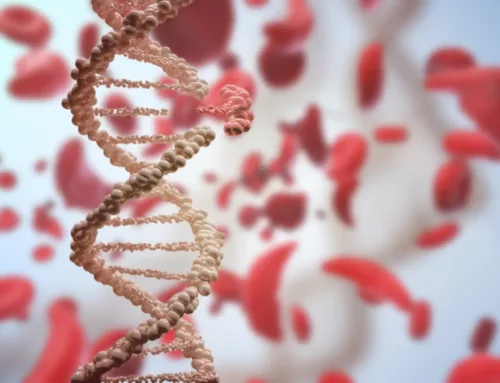Looking for something?
Hope of New Treatments for Chronic Liver Disease MASH (NASH)

In the early stages of Metabolic Dysfunction-Associated Steatohepatitis (MASH), many patients are asymptomatic, though some may feel weak or fatigued or have an ache in their upper right abdomen. While lifestyle changes can help patients diagnosed early enough, more advanced stages of the disease have fewer options. However, recent successful clinical trials are providing hope that this may change.
The Growing Prevalence of Metabolic Dysfunction-Associated Steatohepatitis (MASH)
Hepatic Steatosis, meaning fatty liver, is one of the most common chronic liver diseases globally. It affects approximately one-quarter of the world’s population and is predicted to lead the way for liver transplantation by 2030 (1). According to a recent study published in the International Journal of Molecular Sciences, by 2040, over half the adult population is forecasted to have MASLD/MASH (2), and the direct medical costs are estimated to exceed $100 billion annually in the United States (1).
Previously known as non-alcoholic steatohepatitis (NASH), MASH is the most severe form of metabolic dysfunction-associated fatty liver disease (MASLD) caused by the accumulation of fat in the liver and potentially leading to inflammation, cirrhosis, and liver-related death. It presents in individuals who consume little or no alcohol and have no secondary cause for hepatic steatosis (3). It’s estimated that 20-30% of MASLD patients develop MASH (2), and it presents differently among individuals.
For Diane, finding out she had MASH was a shock. She had gone in for a routine physical, and her blood results showed that she had elevated liver enzymes, while a series of later exams revealed scarring in her liver that was cirrhosis. Diane worked full time, was never tired, and had none of the yellow tinge caused by jaundice, but now she was told she would need a liver transplant. Once the diagnosis was properly explained to her, she realized her lifestyle of eating fast food, lack of exercise, and not putting herself first had probably contributed to the disease.
Some people, like Avani, feel extreme exhaustion and have trouble staying awake. She had recently been diagnosed with diabetes, but at 37 years old, she felt sure it was something more causing her fatigue. After being referred to an endocrinologist and then a gastroenterologist, she eventually had a liver biopsy that showed she had stage four cirrhosis. Avani says she had always led an active lifestyle, but after the diagnosis, she started to exercise every day for an hour, completely stopped drinking alcohol, and became careful about what she eats.
“People need to understand that MASH is a progressive disease. It won’t go away. If you ignore it, it doesn’t just disappear. And you have to deal with it and manage it,” Avani says.
As MASH is often associated with obesity, insulin resistance, type 2 diabetes, and metabolic syndrome, lifestyle interventions like diet and exercise can improve fatty liver. Studies have found that a weight loss of at least 3-5% could improve hepatic steatosis, and 5-7% weight loss could reduce inflammatory activity, while losing up to 10% of the weight indicated fibrosis regression (1). However, these lifestyle changes are unlikely to help with more advanced cases of MASH, which may include liver fibrosis (1).
Additionally, it’s not just the liver that’s harmed during the disease; those with MASH are at an increased risk of developing coronary atherosclerosis, myocardial alterations, and arrhythmias while also boosting the risk of cardiovascular disease to 64% (1). Despite MASH increasing liver-related mortality, cardiovascular disease is ultimately the most common cause of death in patients with MASH (1). Notably, those with MASH are also more likely to develop cancer, and those with progressive MASH can also develop a liver cancer called hepatocellular carcinoma (HCC).
Changing the Name to Change the Perception
In 2023, a group of over 200 physicians, public health experts, industry representatives, regulatory officials, and patient advocates voted to change the nomenclature of non-alcoholic steatohepatitis (NASH) and non-alcoholic fatty liver disease (NAFLD) — names coined in the 1980s to describe a liver coated with extra fat occurring in the absence of excessive alcohol consumption — to MASH (metabolic dysfunction-associated steatohepatitis) and MASLD (metabolic dysfunction-associated fatty liver disease).
For decades, liver doctors and patient advocates had been saying the name was outdated, and many felt the name not only trivialized the disease but was scientifically inaccurate. By the late 2010s, not only was NAFLD/MASLD becoming increasingly prominent and leading the way in liver failure and transplant, but it was now evident it could co-exist with other forms of liver disease, including alcohol-associated illness. Additionally, the stigma associated with the words “fatty” and alcohol would sometimes make patients feel ashamed and emotional, doctors explained.
The new name is meant to clarify what the disease is rather than what it isn’t, hopefully encouraging a better understanding and sparking more research interest in it. This may include finding a better way to definitively diagnose the disease other than the current gold standard of a liver biopsy, an expensive and invasive procedure that carries a risk of bleeding and is ill-suited to the ongoing monitoring of disease progression.
Therefore, AstraZeneca is supporting research to find non-invasive diagnostic biomarkers for clinical trials and clinical practice. Litmis in Europe and NIMBLE in the United States are working on developing a potential blood and imaging biomarker for the disease. We are all hoping the non-invasive diagnostics will make it easier to diagnose patients and potentially improve clinical development efficiency, which now requires biopsies as the gold standard endpoint.
Encouraging results from Ionis Pharmaceuticals Clinical Trial of ION224
ION224 is an investigational ligand-conjugated antisense (LICA) medicine designed to reduce the production of diacylglycerol acyltransferase 2 (DGAT2) to treat people with MASLD and the more advanced MASH. DGAT is an enzyme that catalyzes the final step in triglyceride synthesis in the liver, and by minimizing its production, Ionis says it should decrease triglyceride synthesis and treat MASH. (Learn more about LICA in this previous OTS article, and the first FDA approved drug that uses LICA technology to deliver ASOs here.)
In March, Ionis Pharmaceuticals announced that its Phase II clinical trial assessing ION224 hit its primary endpoint of liver histological improvement and its secondary endpoint of MASH resolution with both the 120-mg and 90-mg doses.
The trial consisted of 160 people with MASH, who either received the placebo or one of three subcutaneous doses (60, 90, or 120 mg) of ION224 once a month. After 51 weeks, results measured by biopsy showed that patients displaying MASH histologic improvement without worsening fibrosis were notably higher in the top two dose cohorts compared to the placebo group. At the highest dose, 44% of patients had a 50% or greater relative reduction in liver fat buildup, while 3% of those in the placebo group showed this improvement.
Subgroup analysis revealed that patients with more advanced fibrosis experienced significant improvements after taking ION224. Additionally, 32% of patients receiving the high 120 mg dose had at least a one-stage improvement in fibrosis without worsening steatohepatitis as measured by biopsy, compared to 12.5% of those taking the placebo.
Ionis says the drug was safe and well tolerated in MASH participants, and no patients who took ION224 experienced gastrointestinal side effects or worsening hepatic or renal function.
“Reducing the production of DGAT2 enzyme decreases the overproduction of triglycerides that contribute to excess liver fat, which can result in liver damage and inflammation. We are encouraged by these ION224 data, showing that a monthly subcutaneous medicine targeting DGAT2 has the potential to improve MASH and prevent its progression to more severe stages, including advanced liver fibrosis and cirrhosis,” said Sanjay Bhanot, MD, PhD, senior vice president and chief medical officer at Ionis, in the press release. “The inhibition of DGAT2 represents a novel approach for MASH, a progressive disease in need of better treatment options.”
Other Treatments for MASH in Development
A day after Ionis announced the successful results of its Phase II clinical trial, the Food and Drug Administration approved Rezdiffra, the first drug designed to treat adults who have MASH/NASH with moderate to advanced liver scarring. Taken daily, the pill Rezdiffra, made by Madrigal Pharmaceuticals, is a liver‐directed, orally active thyroid hormone receptor beta–selective agonist that demonstrates specific uptake into the liver and reduces liver fat, inflammation, and scarring.
The accelerated approval of Rezdiffra comes after its successful Phase 3 study, which demonstrated that it could resolve MASH symptoms without deteriorating fibrosis in 26% and 30% of patients at two doses, compared to 10% in the placebo group. Additionally, fibrosis was shown to improve by at least one stage in 24% and 26% of patients treated with Rezdiffra compared with 14% in the placebo group (4). However, a post approval study must still be conducted to verify and describe Rezdiffra’s clinical benefit.
According to Madrigal Pharmaceuticals, the drug costs $47,400 per year, which the drug-pricing watchdog group Institute for Clinical and Economic Review says is cost-effective. Additionally, the company says its focus is on patients with advanced MASH already under the care of physicians specializing in liver disease, which may make insurance reimbursement more efficient.
German drugmaker Boehringer Ingelheim is also working on creating a treatment for MASH. It is teaming up with Suzhou Ribo Life Science and Ribocure Pharmaceuticals, experts in small interfering RNA (siRNA), while providing its own expertise in treating cardiovascular, renal, and metabolic diseases to create a treatment for MASH.
Other therapeutic companies working on a MASH treatment include Bristol Myers Squibb Pharmaceuticals, which is in its phase 2 clinical trial for a siRNA encapsulated in a retinoid-conjugated LNP that targets the HSP47 gene, which is thought to be associated with tissue fibrosis (5).
Regulus Therapeutics is in its phase 1/2a trial for its drug, a GalNAc-conjugated anti-miRNA that targets miR-103/107. Studies have found that the levels of these two miRNAs were significantly upregulated in the livers of obese mice with steatosis, it is therefore thought that anti-miR-103/107 could work as an insulin sensitizer and a study done by Regulus showed that the drug could reduce triglyceride levels and liver steatosis in mice (5).
Ionis, in collaboration with AstraZeneca, is also working on additional ASO therapies for treating MASH. The first, ION445 (AZD7503) works by mimicking the protective effects of the LoF mutation in the hydroxysteroid 17-beta dehydrogenase 13 (HSD17B13) gene, where a single nucleotide substitution causes a loss of function in the gene. This is associated with protective effects against MASH, liver fibrosis, cirrhosis, HCC, and liver-related mortality. Additionally, both Alnylam and Arrowhead Pharmaceuticals are in clinical trials, phase 2 and phase 1, respectively, for their MASH therapeutics, siRNA-GalNAc conjugates targeting the HSD17B13 gene (5).
Ionis is also investigating a second ASO drug, AZD2693 (ION839), that may downregulate the harmful PNPLA3 variant, which severely impairs normal fat breakdown in liver cells. Preclinical evidence showed that the PNPLA3 ASO therapy improved multiple stages of MASH. AZD2693 is currently in a Phase 2 trial, and AZD7503 is in a Phase 1 trial. Amgen, Arrowhead, and Alnylam Pharmaceuticals are also investigating how targeting the PNPLA3 gene could improve MASH and are in their Phase 1 clinical trials (5). Amgen’s drug, AMG 609, is a siRNA-GalNAc conjugate; Arrowhead Pharmaceuticals’ candidate, JNJ-75220795, uses their TRiM platform to deliver siRNA, while Alnylam’s ALN-PNP contains siRNA in their ESC+/GalNAc platform (5).
Many other pharmaceutical companies, including Sprint Biosciences, Avogadro Pharmaceuticals, OliX Pharmaceuticals, Resalis Therapeutics, RosVivo Therapeutics, and others, are also conducting preclinical trials for MASH drugs (5). Please note that as many researchers and companies are working to develop a therapy to treat this disease, this is unlikely to be a complete listing.
Interestingly, GLP1 inhibitors are showing some early signs of working for MASH, perhaps indirectly via weight loss, but there are also some potential direct effects.
MASH: the future of treating the increasingly common disease
As more of the population is diagnosed with MASLD and MASH, treatments like ION224, Rezdiffra, and AZD2693 may provide much-needed treatments for patients like Diane and Avani. The promising trial results and approvals of therapeutic drugs like these could change the lives of many with advanced liver disease, whose only option right now is a liver transplant. Additionally, as the disease burden is expected to increase around two to three-fold within a decade, the search for a less invasive diagnostic procedure, combined with an increase in understanding of the disease, will hopefully lead to earlier diagnoses worldwide.
References
- Xu X, Poulsen KL, Wu L, Liu S, Miyata T, Song Q, Wei Q, Zhao C, Lin C, Yang J. Targeted therapeutics and novel signaling pathways in non-alcohol-associated fatty liver/steatohepatitis (NAFL/NASH). Signal Transduct Target Ther. 2022 Aug 13;7(1):287. doi: 10.1038/s41392-022-01119-3. PMID: 35963848; PMCID: PMC9376100.
- Yanai H, Adachi H, Hakoshima M, Iida S, Katsuyama H. Metabolic-Dysfunction-Associated Steatotic Liver Disease-Its Pathophysiology, Association with Atherosclerosis and Cardiovascular Disease, and Treatments. Int J Mol Sci. 2023 Oct 23;24(20):15473. doi: 10.3390/ijms242015473. PMID: 37895151; PMCID: PMC10607514.
- Loomba R, Morgan E, Watts L, Xia S, Hannan LA, Geary RS, Baker BF, Bhanot S. Novel antisense inhibition of diacylglycerol O-acyltransferase 2 for treatment of non-alcoholic fatty liver disease: a multicentre, double-blind, randomised, placebo-controlled phase 2 trial. Lancet Gastroenterol Hepatol. 2020 Sep;5(9):829-838. doi: 10.1016/S2468-1253(20)30186-2. Epub 2020 Jun 15. PMID: 32553151.
- Harrison SA, Bedossa P, Guy CD, Schattenberg JM, Loomba R, Taub R, Labriola D, Moussa SE, Neff GW, Rinella ME, Anstee QM, Abdelmalek MF, Younossi Z, Baum SJ, Francque S, Charlton MR, Newsome PN, Lanthier N, Schiefke I, Mangia A, Pericàs JM, Patil R, Sanyal AJ, Noureddin M, Bansal MB, Alkhouri N, Castera L, Rudraraju M, Ratziu V; MAESTRO-NASH Investigators. A Phase 3, Randomized, Controlled Trial of Resmetirom in NASH with Liver Fibrosis. N Engl J Med. 2024 Feb 8;390(6):497-509. doi: 10.1056/NEJMoa2309000. PMID: 38324483.
- Li, S., Xiong, F., Zhang, S., Liu, J., Gao, G., Xie, J., & Wang, Y. (2024). Oligonucleotide therapies for nonalcoholic steatohepatitis. Molecular Therapy – Nucleic Acids, 35(2), 102184. https://doi.org/10.1016/j.omtn.2024.102184
“The views, opinions, findings, and conclusions or recommendations expressed in these articles and highlights are strictly those of the author(s) and do not necessarily reflect the views of the Oligonucleotide Therapeutics Society (OTS). OTS takes no responsibility for any errors or omissions in, or for the correctness of, the information contained in these articles. The content of these articles is for the sole purpose of being informative. The content is not and should not be used or relied upon as medical, legal, financial, or other advice. Nothing contained on OTS websites or published articles/highlights is intended by OTS or its employees, affiliates, or information providers to be instructional for medical diagnosis or treatment. It should not be used in place of a visit, call, consultation, or the advice of your physician or other qualified health care provider. Always seek the advice of your physician or qualified health care provider promptly if you have any healthcare-related questions. You should never disregard medical advice or delay in seeking it because of something you have read on OTS or an affiliated site.”







